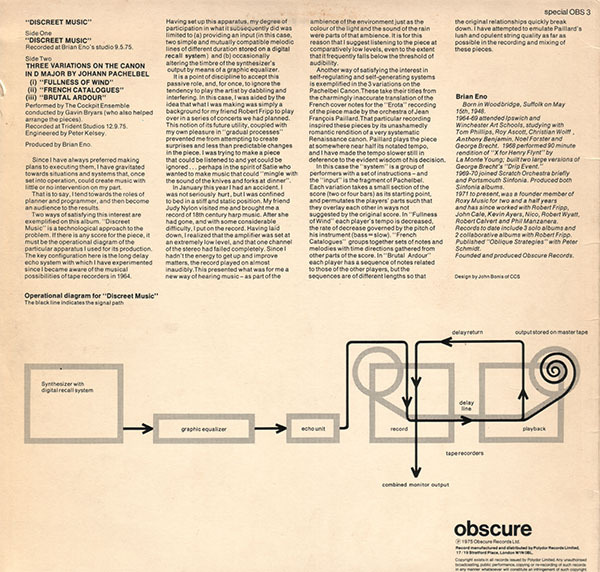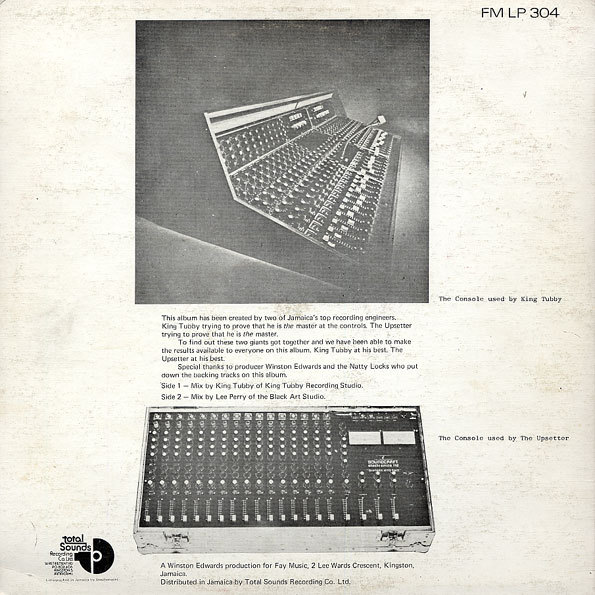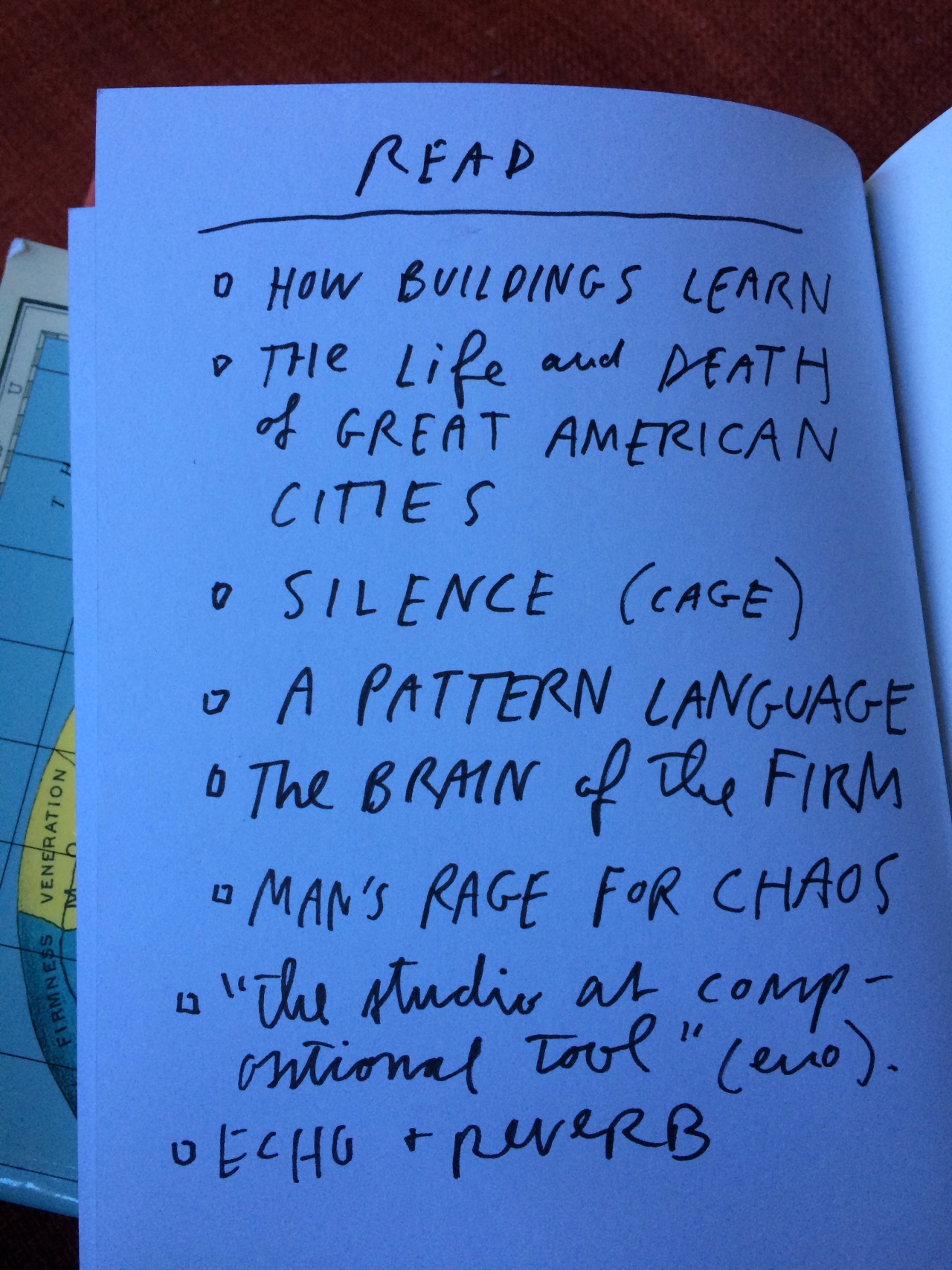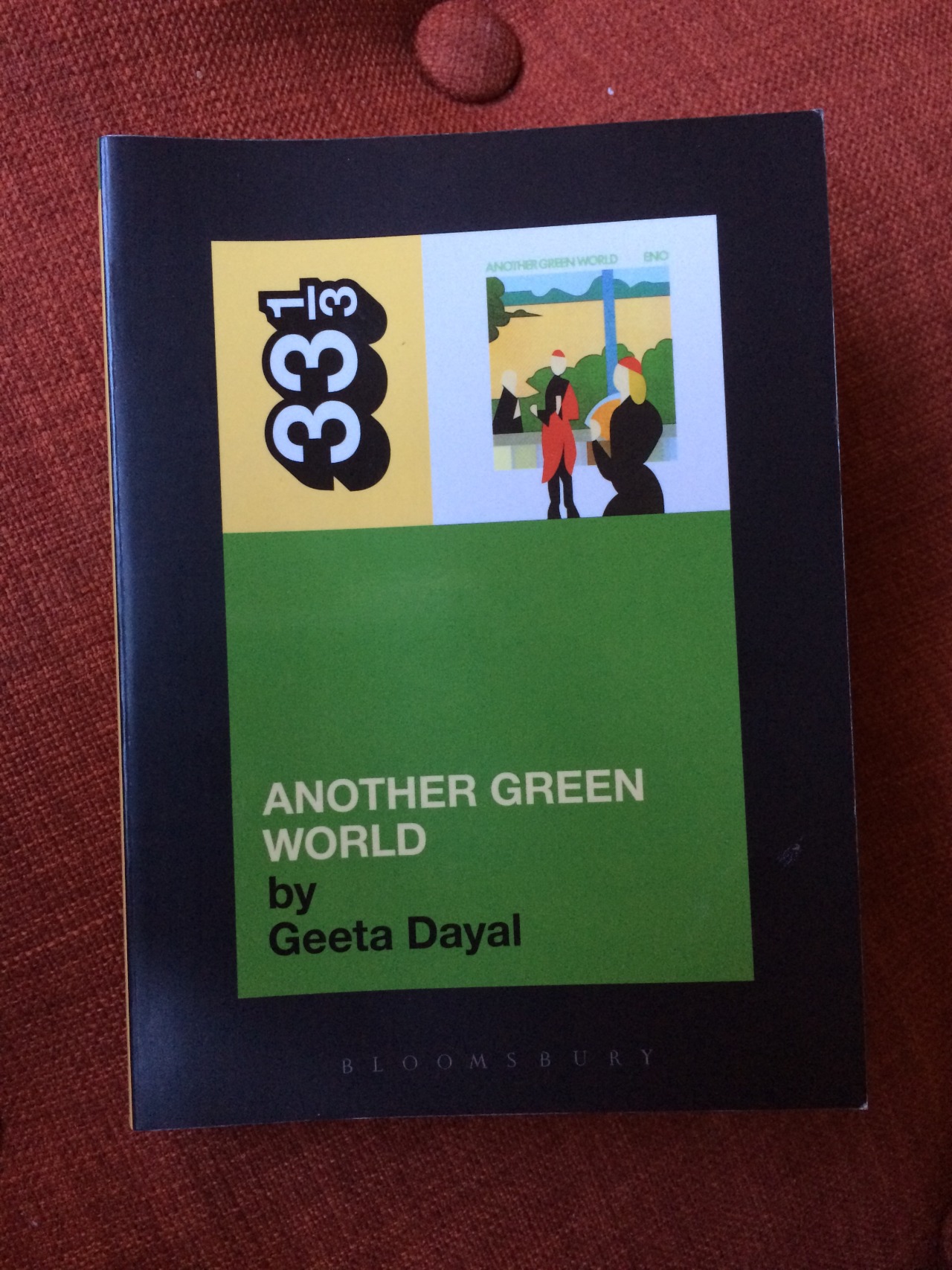Another Green World by Geeta Dayal
Love the 33 1/3 series, and picked this one up from Twist and Shout in Denver, CO, after Dayal had some smart bits in the Eno documentary I watched.
I liked how Dayal seemed transformed by Eno’s ideas while writing the book — for example, she used his Oblique Strategies cards to make decisions while writing (“Sometimes the cards kept me in stasis; at other times, the cards sparked radical changes.”), and played out some Eno-esque activities:
I inherited an old video projector from 1995, aimed it at one of my slanted ceilings, and used the hazy flicker, of old videos to light my 200-year-old apartment in Boston at night.
“This is a book about process,” she writes.
One of the most instructive things I did was to listen to Another Green World at a number of different speeds. Each time I heard something new that I had not heard before—a new sound that was buried in the mix, for example, or an effect, a heavily layered backing vocal, an abstruse lyric. Speeding up and slowing down Discreet Music taught me a lot, too; the title track of Discreet Music, or “Side One” if you happen to own the vinyl copy, is recorded at half-speed. So I listened to it at double-speed, to gain some insight into what the original material might have sounded like before Eno slowed it down. I also listened to it at quarter-speed, which I liked even more than Eno’s half-speed version.
I loved this story by Eno, which reminded me of T.S. Eliot’s Four Quartets:
I read a science fiction story a long time ago where these people are exploring space and they finally find this habitable planet—and it turns out to be identical to Earth in every detail. And I thought that was the supreme irony: that they’d originally left to find something better and arrived in the end—which was actually the same place. Which is how I feel about myself. I’m always trying to project myself at a tangent and always seem eventually to arrive back at the same place. It’s a loop.
And some wonderful, wonderful life advice from Eno:
Everyone thinks that Beethoven had his string quartets completely in his head—they somehow appeared there and formed in his head—and all he had to do was write them down and they would be manifest to the world. But what I think is so interesting, and would really be a lesson that everybody should learn, is that things come out of nothing. Things evolve out of nothing. You know, the tiniest seed in the right situation turns into the most beautiful forest. And then the most promising seed in the wrong situation turns into nothing. I think this would be important for people to understand, because it gives people confidence in their own lives to know that’s how things work.
If you walk around with the idea that there are some people who are so gifted—they have these wonderful things in their head but and you’re not one of them, you’re just sort of a normal person, you could never do anything like that—then you live a different kind of life. You could have another kind of life where you could say, well, I know that things come from nothing very much, start from unpromising beginnings, and I’m an unpromising beginning, and I could start something.
Eno says he came up with the idea for ambient music when he was laid up in a hospital bed after an accident and his friend Judy Nylon visited and brought him a record of 18th century harp music:
After she had gone, and with some considerable, difficulty, I put on the record. Having laid down, I realized that the amplifier was set at an extremely low level, and that one channel of the stereo had failed completely. Since I hadn’t the energy to get up and improve matters, the record played on almost inaudibly. This presented what was for me a new way of hearing music—as part of the ambience of the environment just as the colour of the light and the sound of the rain were parts of that ambience.
I love that the back cover of Discreet Music had a diagram of his effects chain:

Which was inspired by seeing the console on the back of King Tubby Meets The Upsetter At The Grass Roots Of Dub:

My friend Matt Thomas once said some books are centrifugal: they spin you out to other books. This was certainly one of those, and I kept a list in the back of books I wanted to (re)read:

And music to listen to:

It’s a short, good read, particularly if you love Eno, as I do.
Filed under: Brian Eno



 betzistar
betzistar